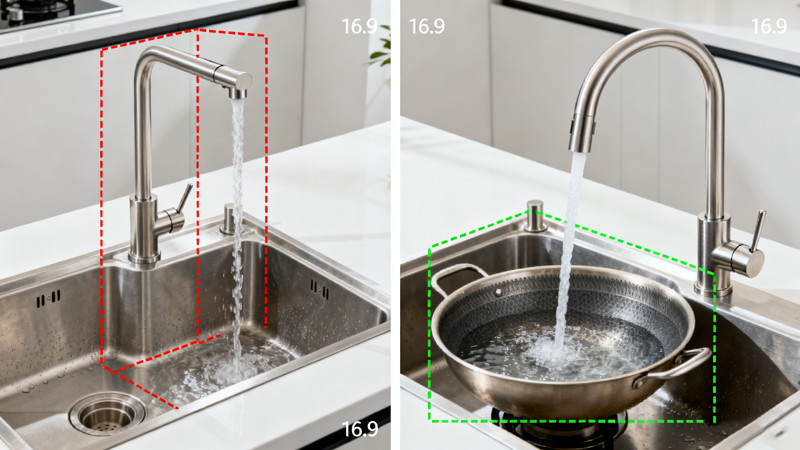Skinny within the center | House and Backyard
When Daniel Parolek seems on the American housing market, the architect sees each an affordability disaster and a definite lack of the old style housing varieties that would ship modestly priced houses.
In his new guide, “Lacking Center Housing,” Parolek proposes constructing extra medium-density housing, similar to duplexes, four-unit buildings and cottage flats. These housing varieties had been widespread in American cities earlier than World Conflict II. They’ve all however disappeared since. Single-family suburbs and condominium or condominium buidings have dominated the event scene.
Parolek, who runs Opticos Design in Berkeley, Calif., requires utilizing prewar neighborhoods as a template for at the moment’s improvement. These cozier housing varieties are smaller than suburban homes, however in addition they price considerably much less.
“Lacking center shouldn’t be the silver bullet, but it surely’s one device that each metropolis wants of their toolbox to ship extra affordability or attainability in housing,” Parolek says.
The next is a dialog with the architect that has been edited for readability.
What’s the idea of missing-middle housing?
The premise for missing-middle housing is that traditionally and even at present, we’ve carried out a very good job of placing planning, zoning, financing and improvement industries in place to ship single-family houses on one finish of the spectrum. And on the opposite finish of the spectrum, over the previous 15 to twenty years specifically, we’ve established comparable techniques to ship the bigger multifamily or condominium initiatives.
There’s a full vary of housing varieties in between these — duplexes, triplexes, cottage courts, smaller courtyard condominium buildings. They existed in neighborhoods earlier than the Nineteen Forties, however we’ve just about stopped constructing them.
Beginning in 1979, there’s been a dramatic lower within the variety of missing-middle housing buildings which have been developed. It’s been a really regular decline. We haven’t delivered them as a result of there are a selection of boundaries in place.
We outline missing-middle housing as buildings with fewer than 19 items. The core of the lacking center is 12 items or much less in house-scale buildings. Lower than 10% of housing items produced between 1990 and 2013 had been missing-middle scale. You used to have the ability to open a Sears & Roebuck catalog and purchase a fourplex or a sixplex. Most individuals don’t understand that you could possibly purchase a missing-middle housing sort from the Sears & Roebuck catalog again within the early 1900s. We’ve undoubtedly come a great distance within the fallacious route for the supply of those housing varieties.
As you’re describing these housing varieties, I’m envisioning an older neighborhood close to a downtown or city core.
That’s a wonderful location. Walkability tends to be a very key side to both renting or promoting the missing-middle items. These pre-1940 neighborhoods adjoining to a downtown are wonderful alternatives.
There are additionally alternatives in greenfield places. One instance of that may be a missing-middle townhouse neighborhood we designed within the Salt Lake Metropolis area. Our shopper was in a position to ship items at a value level about $25,000 lower than their typical townhouse product.
If you say attainable, how a lot do missing-middle items promote for?
It clearly varies. On the Salt Lake Metropolis undertaking, the costs began at $189,000 and went as much as $220,000. They had been having a very onerous time delivering something for underneath $275,000 to $300,000 within the townhouse market.
Clearly, in case you bounce into a warmer market, just like the Bay Space, these numbers will spike. One of many issues we’ve seen within the final two years is an actual spike in prices for development and the entitlement course of.
The value vary sounds enticing. What are patrons giving up?
We’re eradicating the price of that storage area from the equation.
With that walkability that’s being delivered in these neighborhoods, a family might solely have one automobile, or they’re utilizing Uber or Lyft or a carshare. Lots of people are OK parking on the road. We did the planning for the primary missing-middle neighborhood within the nation close to Omaha, Nebraska, and it’s delivering one parking area per unit, and the second parking area is on the road. Our shopper is discovering persons are actually blissful to park proper exterior their entrance door. They’ve full commentary of their automobile always, and so they’re in a position to make use of the entrance door, versus going via a storage or a again door.
And smaller items are actually key. We’re discovering that the extra walkable a location is, the smaller the items that can be acceptable to the market. Thirty % of households throughout the nation are single-person households, so the smaller items are actually enticing to that section.
What are the largest boundaries to those sorts of housing?
Sadly, there’s a number of boundaries.
At the start are zoning boundaries. A part of our work is to enter cities and do focused or wholesale adjustments to their zoning codes to allow lacking center and walkability. Typically cities don’t even have zoning that actually and actually permits for missing-middle housing. Their zoning will go from permitting single-family houses and perhaps duplexes, then it jumps as much as 55-foot-tall buildings.
Even in cities that do have medium-density zoning, densities are usually too low, setbacks are usually too excessive, parking necessities are too excessive. The end result of all these make it actually onerous to ship these housing varieties.
We simply labored with a metropolis to actually analyze their planning insurance policies. A typical lot measurement on this metropolis was 60 toes vast, and the zoning district had a required facet setback of 25 toes, so there was truly solely a 10-foot strip of allowable constructing envelope left over — which is clearly not viable.
Exterior of the planning and zoning boundaries, there are different boundaries. There’s neighborhood opposition that’s at all times a problem.
It’s normally simply the small native builder delivering these missing-middle items, so there’s nobody constructing them at scale.
The opposite factor is constructing codes. If you bounce up above three items, it turns into extra cumbersome and expensive to construct one of these housing.
The record goes on, however that’s only a glimpse of the highest points.
Through the COVID disaster, we’ve heard a lot about folks not desirous to dwell in high-rise towers. How does missing-middle housing work throughout a pandemic?
The missing-middle housing varieties are an actual candy spot between the suburban various and the very city various.
The categories usually should not have shared entries. They don’t have shared corridors. They usually’re usually walk-up, which means they don’t have shared elevators.
And most of them have some non-public out of doors area, which supplies those that little little bit of elbow room that they’re in search of.
These housing varieties are positioned rather well to offer a top quality of dwelling throughout COVID and post-COVID.
 WOWOW Faucets
WOWOW Faucets




